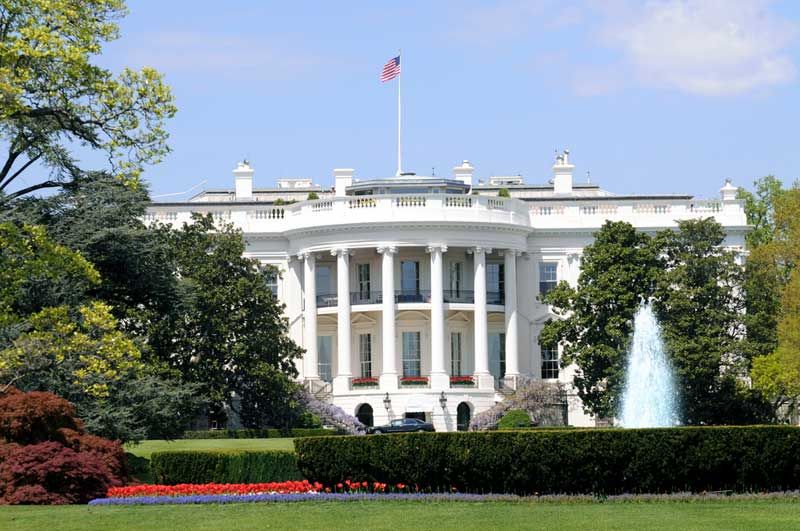Obama Awards Top Honors to Scientists

U.S. President Barack Obama welcomed nearly two dozen researchers and innovators at the White House Friday (Feb. 1) to receive the National Medal of Science and National Medal of Technology and Innovation.
"Now, this is the most collection of brainpower we've had under this roof in a long time — maybe since the last time we gave out these medals," Obama joked in a ceremony in the East Room of the White House. Before the citations for the awards were read, the president thanked the award recipients for contributions that have inspired Americans and changed many lives in practical ways.
"Thanks to the sacrifices they've made, the chances they've taken, the gallons of coffee they've consumed — we now have batteries that power everything from cellphones to electric cars. We have a map of the human genome and new ways to produce renewable energy," the president said. "We're learning to grow organs in the lab and better understand what's happening in our deepest oceans. And if that's not enough, the people on this stage are also going to be responsible for devising a formula to tame frizzy hair — as well as inspiring the game Tetris."
The following is a list of the recipients of the award, starting first with the 12 astronomers, biologists and other researchers who won the National Medal of Science:
- Chemist Allen Bard, of the University of Texas at Austin, who pioneered the development of the scanning electrochemical microscope, which can be used to identify cancerous cells;
- Sallie Chisholm, a biologist at the Massachusetts Institute of Technology who studies the ecology and evolution of microbes in the ocean;
- Sidney Drell, a Stanford University theoretical physicist and arms control specialist, who has advised the government on national security and defense;
- Sandra Faber, a University of California, Santa Cruz, astronomer who was part of the team that discovered the "great attractor," a huge concentration of galaxies and invisible matter that seems to tug at our Milky Way galaxy;
- James Gates, physics professor and string theorist at the University of Maryland;
- Mathematician Solomon Golomb, of the University of Southern California, who is noted for coining the term "polyominoes" (the geometric figures that eventually inspired the computer game Tetris);
- John Goodenough, a physicist and materials scientist of University of Texas at Austin, whose research led to the development of lithium-ion batteries;
- M. Frederick Hawthorne, University of Missouri, whose work with the chemical boron influenced treatments for cancer, arthritis and other diseases;
- Leroy Hood, of the Institute for Systems Biology in Seattle, whose work helped make mapping the human genome possible;
- Harvard mathematician and number theorist Barry Mazur;
- Stanford researcher Lucy Shapiro, whose discovery that the bacterial cell is controlled by an integrated genetic circuit functioning serves as a model for cell differentiation and the generation of diversity in all organisms;
- Princeton's Anne Treisman, who has studied attentional limits in the human mind and brain.
These are the 10 people who were awarded National Medal of Technology and Innovation:
- Frances Arnold, a Caltech engineer and a pioneer in the development of sustainable biofuels and "directed evolution," which is a technique that uses evolution to steer biological processes;
- George Carruthers, a space scientist U.S. Naval Research Lab, who helped create the camera/spectrograph that was put on the moon during the Apollo 16 mission;
- Robert Langer, who runs a biomedical engineering lab out of the Massachusetts Institute of Technology and helped invent controlled drug-release systems;
- Norman McCombs, of AirSep Corporation in New York, who invented pressure swing adsorption oxygen-supply systems that have a wide range of medical and industrial applications
- Gholam Peyman, of Arizona Retinal Specialists, who invented the LASIK surgical technique
- Art Rosenfeld, Lawrence Berkeley National Laboratory in California, who has helped develop energy-efficient building technologies
- Jan Vilcek, of NYU Langone Medical Center, who helped develop therapeutic monoclonal antibodies
- A team of IBM researchers (including Samuel Blum, Rangaswamy Srinivasan and James Wynne) for their discovery of a new form of laser surgery that made modern LASIK eye surgery possible.
Follow LiveScience on Twitter @livescience. We're also on Facebook & Google+.
Sign up for the Live Science daily newsletter now
Get the world’s most fascinating discoveries delivered straight to your inbox.












